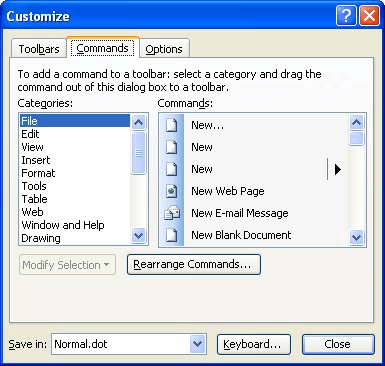Written by Allen Wyatt (last updated September 10, 2016)
This tip applies to Word 97, 2000, 2002, and 2003
Word makes it easy to customize virtually everything you see on your screen. It is possible, for instance, to change the options that appear on the menus used by Word. If you run across a system in which the menus have been changed, then you can change them back by following these steps:

Figure 1. The Customize dialog box.
WordTips is your source for cost-effective Microsoft Word training. (Microsoft Word is the most popular word processing software in the world.) This tip (382) applies to Microsoft Word 97, 2000, 2002, and 2003.

Do More in Less Time! An easy-to-understand guide to the more advanced features available in the Microsoft 365 version of Word. Enhance the quality of your documents and boost productivity in any field with this in-depth resource. Complete your Word-related tasks more efficiently as you unlock lesser-known tools and learn to quickly access the features you need. Check out Microsoft 365 Word For Professionals For Dummies today!
Want to get a bit fancy with how the Word interface behaves? You can configure Word so that its menus don't just appear, ...
Discover MoreWord allows menus to be displayed in two modes. The default mode, which displays menu options dynamically, drives some ...
Discover MoreWant to get rid of some menu options so that they can't be selected? It's easy to do when customizing Word by using these ...
Discover MoreFREE SERVICE: Get tips like this every week in WordTips, a free productivity newsletter. Enter your address and click "Subscribe."
There are currently no comments for this tip. (Be the first to leave your comment—just use the simple form above!)
Got a version of Word that uses the menu interface (Word 97, Word 2000, Word 2002, or Word 2003)? This site is for you! If you use a later version of Word, visit our WordTips site focusing on the ribbon interface.
Visit the WordTips channel on YouTube
FREE SERVICE: Get tips like this every week in WordTips, a free productivity newsletter. Enter your address and click "Subscribe."
Copyright © 2025 Sharon Parq Associates, Inc.
Comments